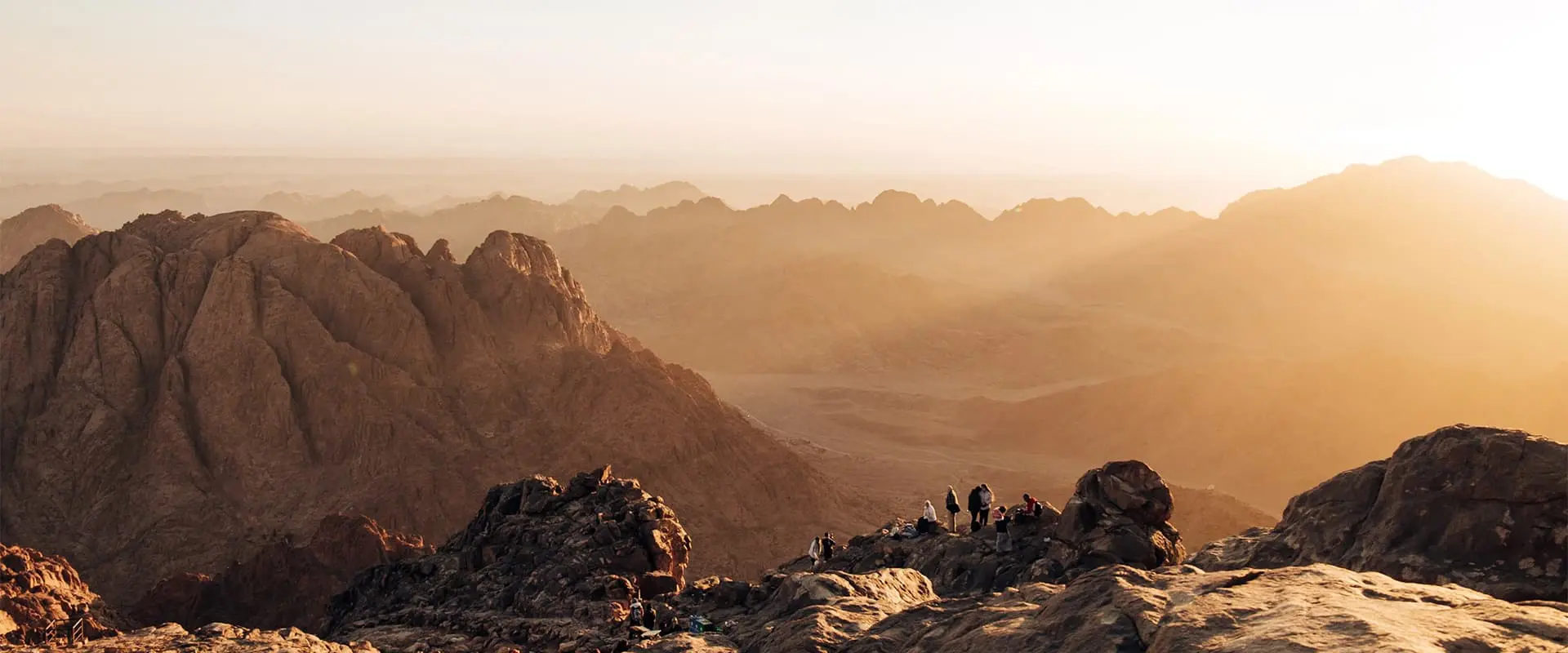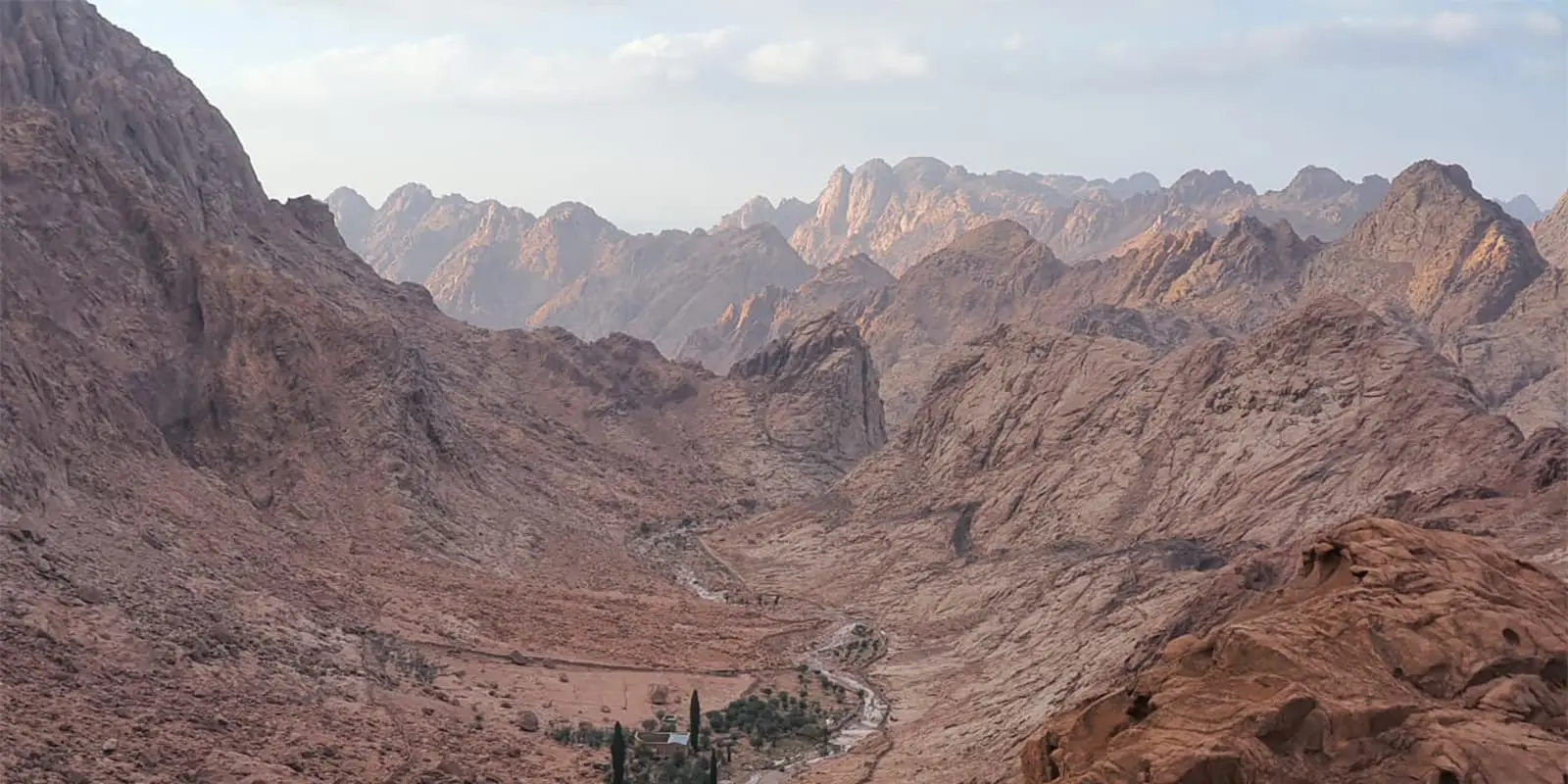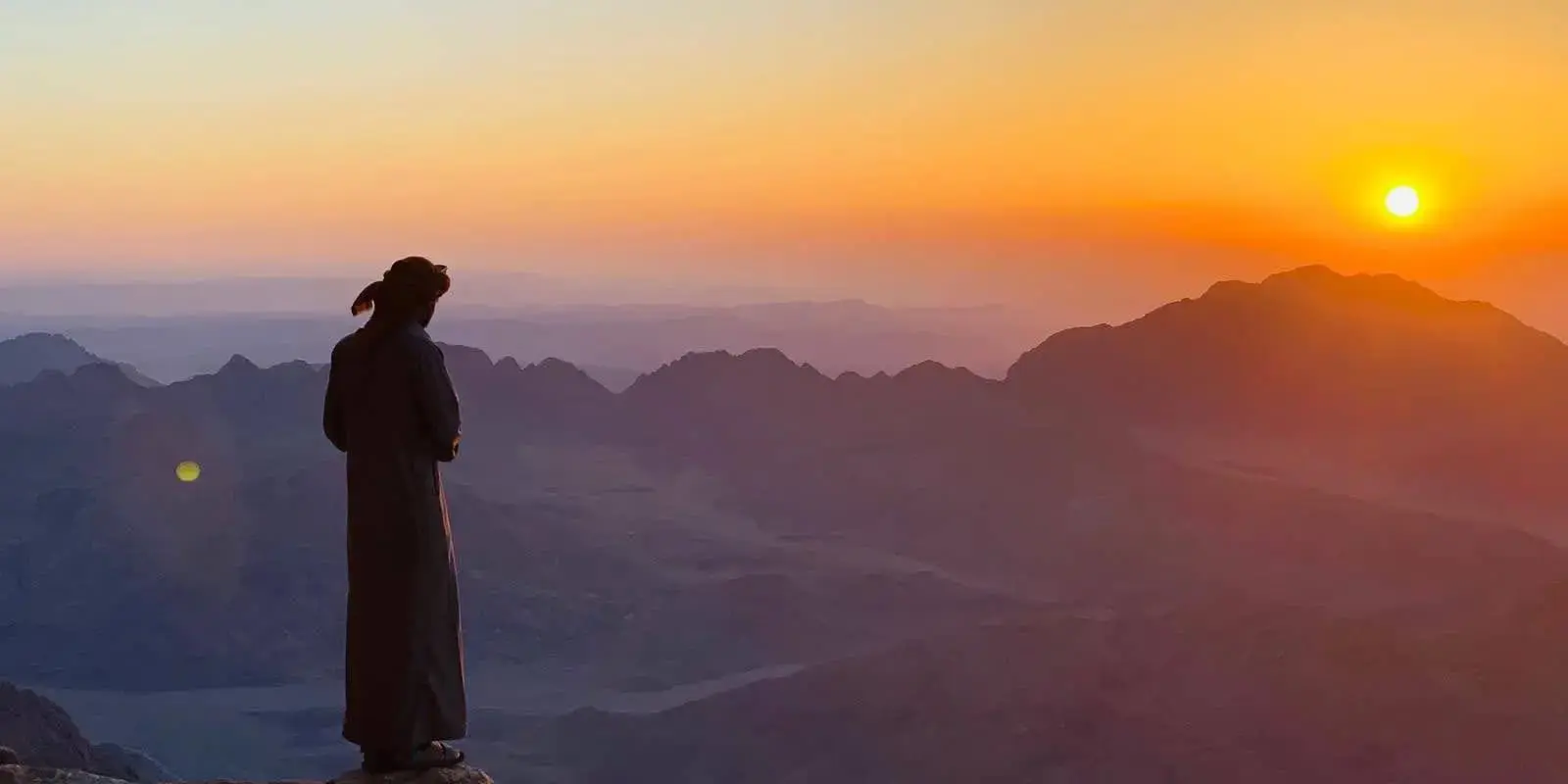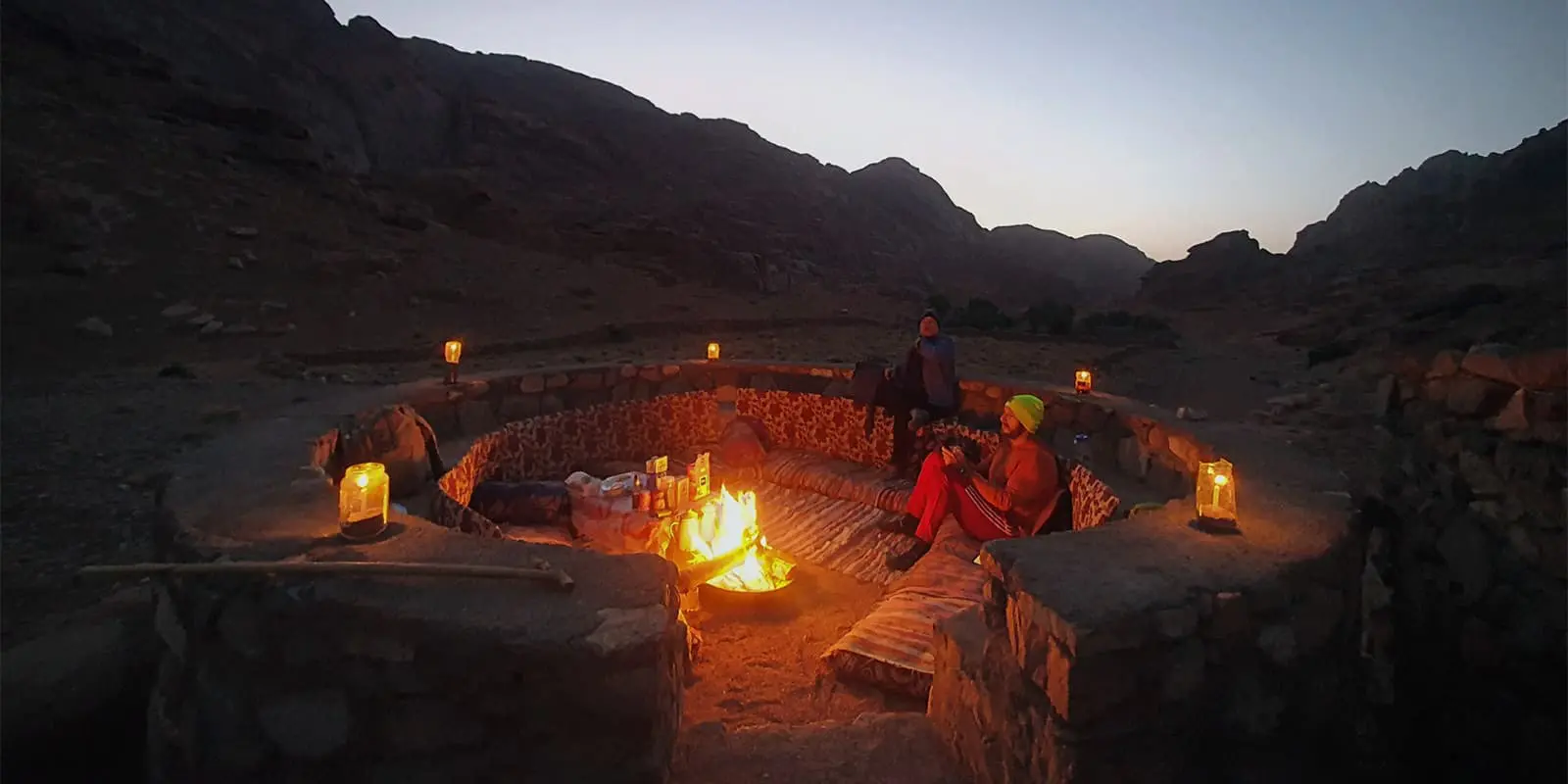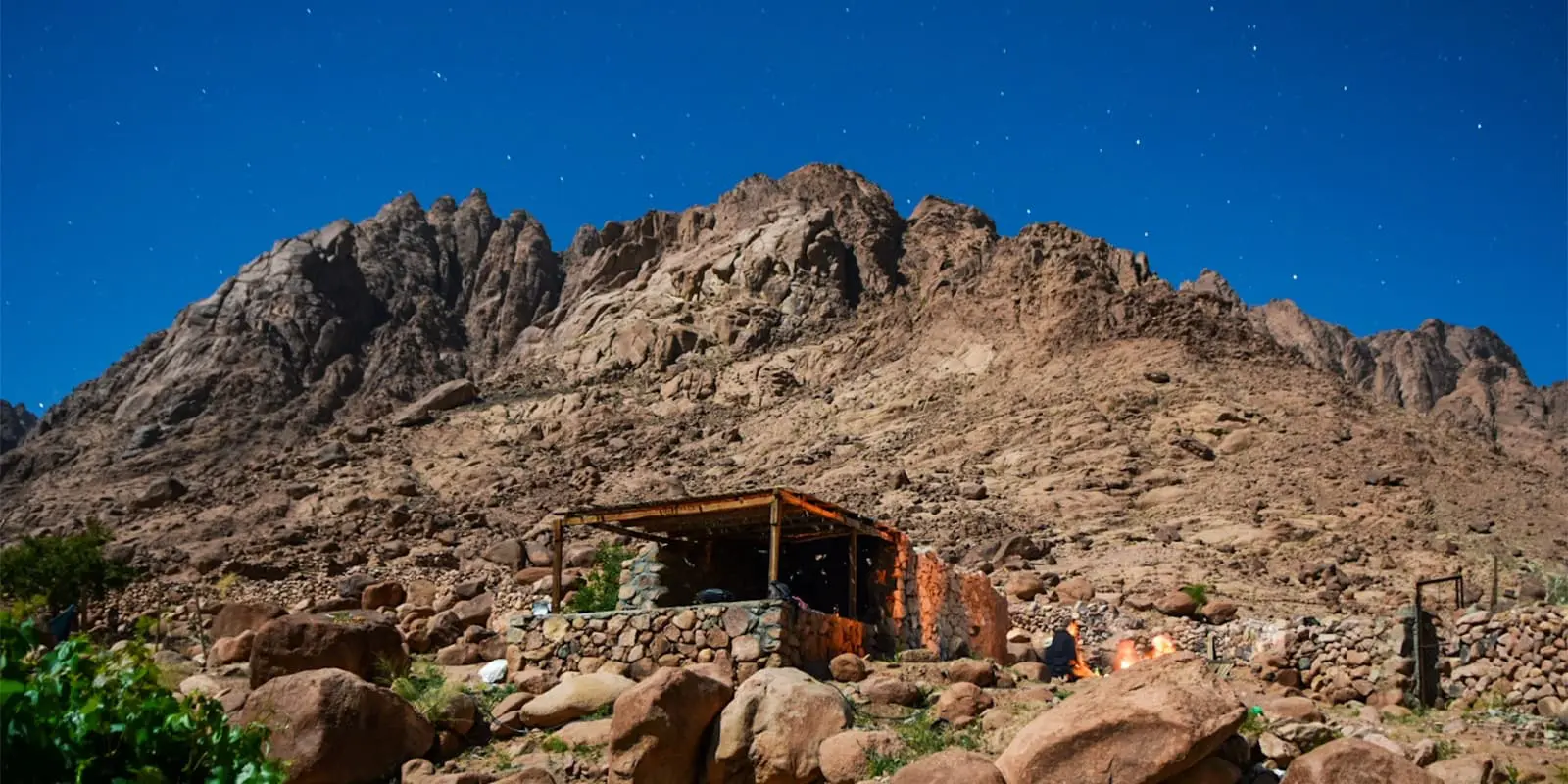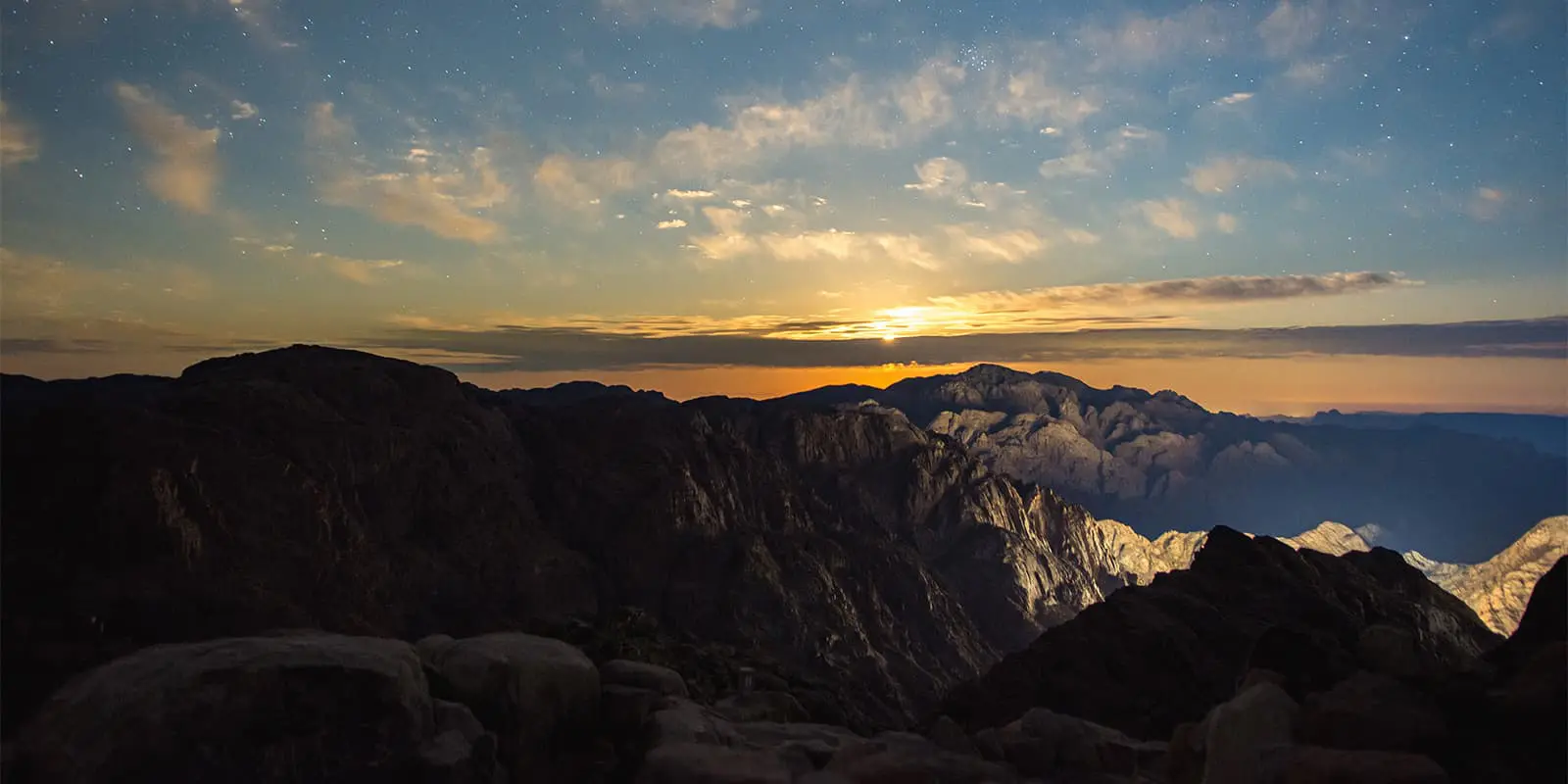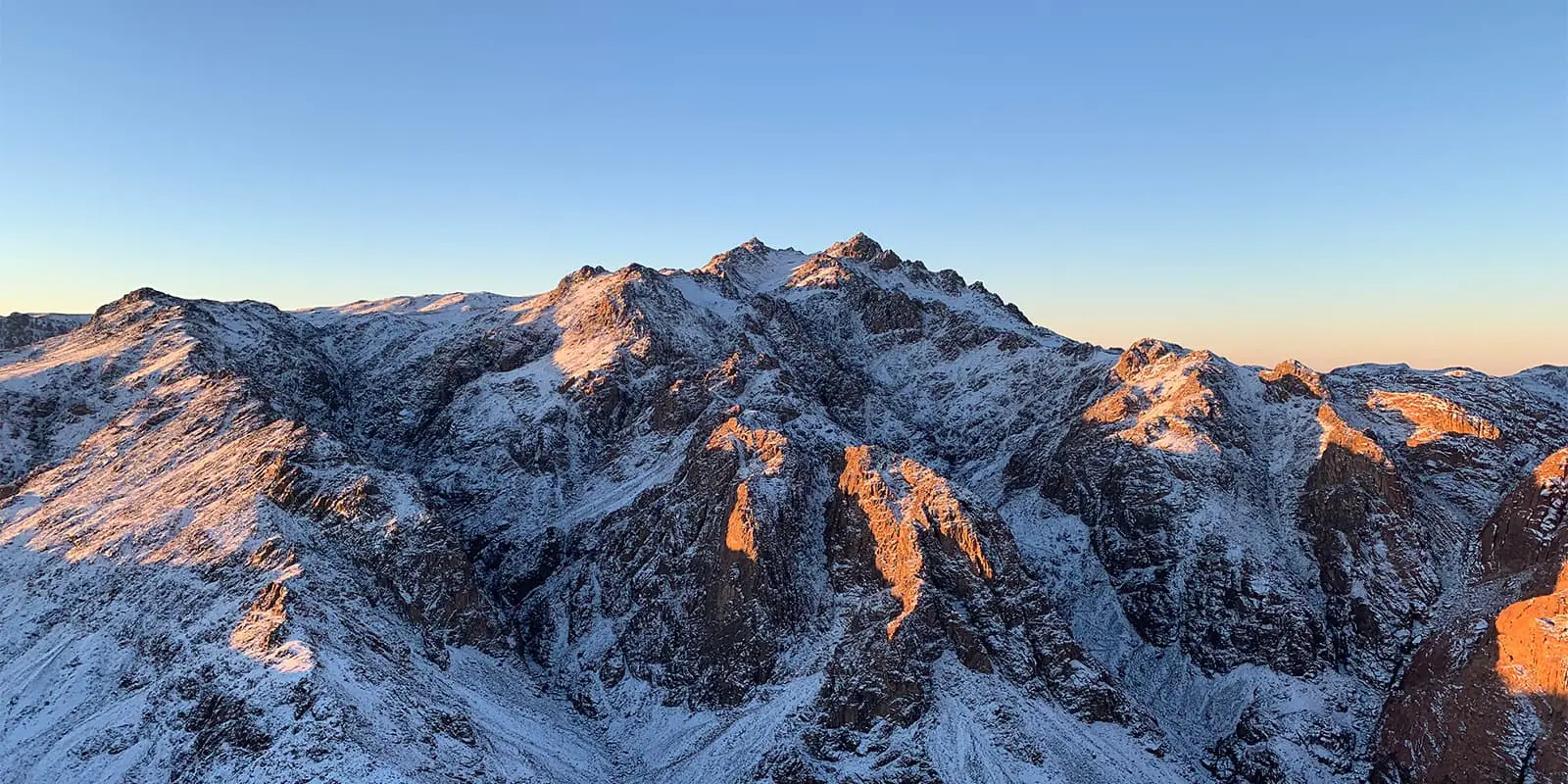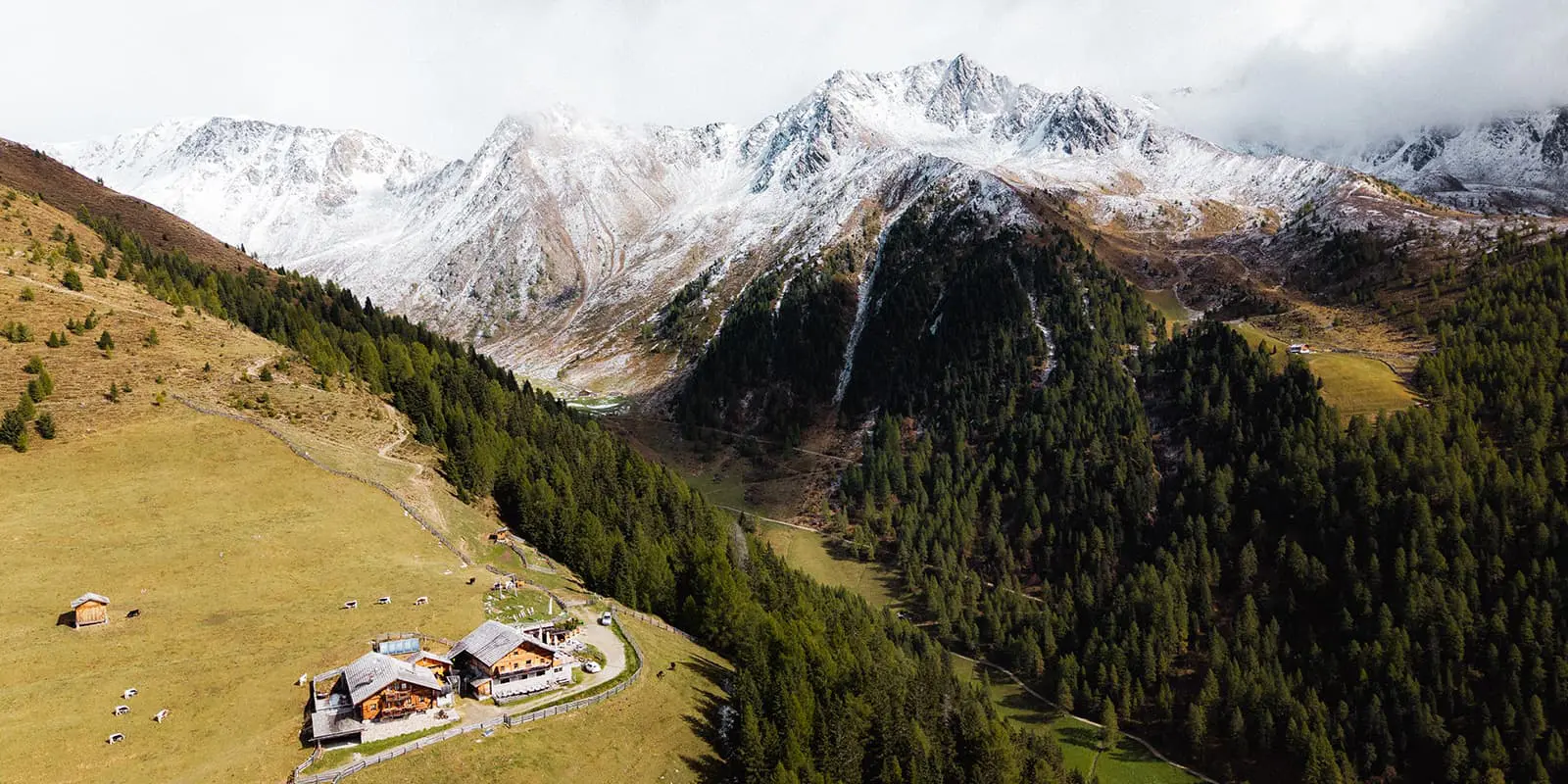The Sinai Mountains Highland Trail in Sinai, Egypt is known for its stunning natural landscapes and dramatic valleys. It is renowned for its authentic Bedouin culture and way of life, as well as has been classified on the UNESCO list, making it an ideal destination for exploring the natural landscapes and experiencing Bedouin culture.
The trail takes you, guided, through the area of the Jabali tribe, the protectors of St. Catherine’s Monastery. While you hike, you will also pass the highest point of Egypt at an altitude of 2642 meters. The trail passed by old Bedouin dwellings and their gardens, where you’ll have a feel for how life was and is for these groups. The Sinai Highland Trail is around 117 kilometers through valleys and different mountain peaks — a perfect way to see this beautiful region of Egypt.



